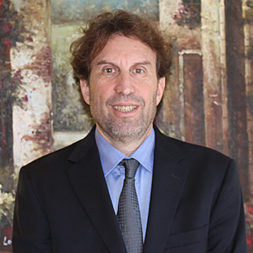
 Arm Specialties by Dr Howard Marans MD
Arm Specialties by Dr Howard Marans MD
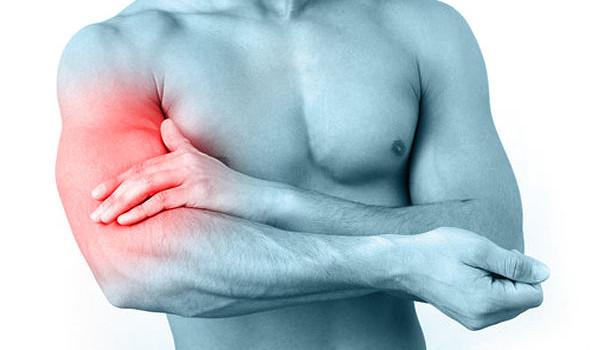
Arm injuries are injuries that affect the forearm, arm, or elbow. The arm contains three bones (ulna, radius, and humerus), along with tendons, muscles, ligaments and bursa. If any of these structures is injured, pain and other symptoms can occur.
Tennis Elbow
Tennis elbow is common among tennis players, but also among other athletes who use the elbow frequently, like powerlifters and grapplers. The medical term for tennis elbow is lateral epicondylitis, and it occurs because overuse of the extensor muscles in the forearm. Tennis elbow usually develops slowly over time. Tennis elbow can usually be treated non-surgically.
Golfer’s Elbow
Golfer’s elbow is similar to tennis elbow. They are both forms of tendinitis that usually occur as a result of overuse in sports players. However, golfer’s elbow occurs on the inside of the elbow, while tennis elbow affects the outside of the elbow.
Fractures
Bones can be fractured at many points in the arm. Severe fractures may require arm surgery to set the bone, while less severe fractures may need only casting and immobilization.
Some types of arm fractures include:
- Distal humerus fracture – Occurs where the arm bone, or humerus, meets the forearm bone, or ulna, in the elbow. Distal humerus fracture is a severe injury that could lead to arthritis as well as neuro-vascular problems.
- Olecranon fracture – The olecranon is the bony point of the elbow that you can easily feel when touching the elbow. A blow to the elbow or a fall can cause an olecranon fracture.
- Radial head fracture – The radius is the smaller bone in the arm. The radial head lies near the elbow, and can be fractured after trauma to the elbow or arm.
- Distal radial fracture – A fracture that occurs on the part of the radius that is closer to the wrist.
- Ulna shaft fracture – The shaft of the ulna can be fractured, most commonly by striking the forearm. Ulna shaft fractures are also referred to as “nightstick fracture.”
Bursitis
The bursa are small, fluid-filled sacs that cushion the elbow and facilitate movement. Bursitis refers to inflammation of the bursa. Hitting the elbow is the most common cause of elbow bursitis. Swelling and pain are the most common symptoms.
Most cases of elbow bursitis will resolve on their own with rest and ice. In rare cases, the doctor may need to drain the excess fluid from the swollen bursa.
Ulnar Collateral Ligament Tear
The ulnar collateral ligament can stretch or tear due to overuse or trauma. UCL tears are especially common among pitchers. Minor tears may heal on their own within a few days, while moderate tears will often resolve using non-surgical treatments like medication. More severe tears may need arm surgery to restore movement and relieve pain.
Dr Howard Marans MD Liveblog
When to See a Doctor
Minor arm or elbow pain could just indicate bruising or inflammation that will fade on its own. You should see a doctor if you have severe pain or pain that lasts for longer than a few days. In addition, you should see a doctor immediately if you think you may have a broken bone, if you can’t move your elbow, or if the elbow or arm looks deformed.
At your appointment, Dr. Marans will look at your arm and perform a physical examination. Diagnostic tests like x-rays will be ordered to confirm the diagnosis and find out how severe the condition is. Based on the results, Dr. Marans will work with you to develop a plan of treatment, which might include conservative methods, arm surgery, or both.
You can Follow and Tweet Us on Twitter @DrHowardMarans

 7 Tips to Prepare for Your Appointment of Dr. Howard Marans MD
7 Tips to Prepare for Your Appointment of Dr. Howard Marans MD
Prepare for Your Appointment
That anxious moment in the exam room as you wait for the doctor to arrive is not the moment to begin preparing for your appointment. You have just 15 to 30 minutes with that doctor. To make the most of your time together—and to ensure you get the care you need—take a few minutes now to learn what you can do to prepare for your next appointment. Here are six tips to get you started.
1. Gather the Right Information
Our mission is not only to guide you to the right doctor, but to help you get the most out of your doctor visits. The key to a successful appointment is communication. You need to communicate your needs, understand your diagnosis, and discuss your treatment options. Before you go, prepare ahead of time with Health grades Health Coaches, At Your Appointment Guides, and in-depth healthcare information.
2. Identify Your Symptoms
The more accurately and completely you can describe your symptoms, the more likely it is that your doctor can identify your health problem and prescribe an effective course of treatment. Before the appointment, write down all your symptoms. Describe your symptoms in plain language, noting when they started and whether they get worse at certain times of day or in certain situations. Also write a brief outline of your medical history, and be sure to list all the medications you’re currently taking.
3. Research Your Symptoms
Once you’ve identified your symptoms, research them. The more you can learn about the possible causes of your symptoms—and what your treatment options may be—the better equipped you’ll be to discuss your care with your doctor and understand his or her instructions. You can find the resources you need to research your health problems—or to learn how to stay healthy—in our Right Care Centers.
4. Take a Health Assessment
Our Health Coaches ask you a series of questions about a particular condition or disease. We offer Health Coaches for the most common conditions and diseases including childhood ADHD, depression, diabetes, knee pain, and multiple sclerosis. Each is a self-guided health interview that helps you find out if you might suffer from the condition, evaluate your treatment if you’ve already been diagnosed, and get a personalized action plan, including coping tips.
5. Lead the Conversation with Your Doctor
Sometimes it’s difficult to “find your voice” at the doctor’s office. Our At Your Appointment Guides provide you with a series of talking points and questions to ask. We have guides for common conditions like back pain; rare conditions like psoriasis; and situations that require a doctor’s care like birth control. At Your Appointment Guides contain general visit questions as well as specific questions about your symptoms, diagnosis, treatment and medications. You can even print them out!
6. Understand Your Procedure
If you’re likely to need a medical procedure—whether surgery or a diagnostic test, such as a colonoscopy or mammogram—learn all you can about the procedure before your visit so you’ll understand your options and be able to discuss them intelligently. Health grades offers comprehensive articles, slideshows and videos for many common procedures that explain the purpose of the procedure, how it’s performed, the risks involved and what you’ll need to do to prepare for it.
7. Make the Most of Your Next Appointment
Your relationship with your doctor is a partnership. The better able you are to communicate your needs and understand your options, the more productive your appointment will be and the more likely you are to get the treatment you need. The time you have with your doctor is all too brief. A little preparation will help you make the most of your next appointment.

 Dr Howard Marans MD: Foot & Ankle Specialties
Dr Howard Marans MD: Foot & Ankle Specialties
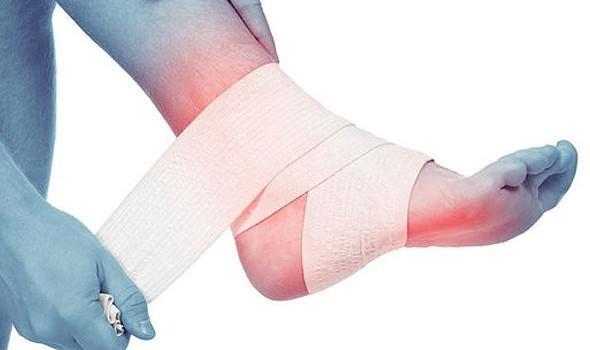
The feet and ankles are responsible for bearing the weight of the entire body and supporting the body in walking, standing, running, jumping, and more. As a result of falls, trauma, overuse, or wear and tear, a number of foot and ankle injuries can develop. Dr. Marans treats foot and ankle injuries with non-surgical methods and with surgery as necessary.
Common Injuries
Symptoms such as foot or ankle pain, swelling, or difficulty moving the foot or ankle should always be evaluated by a physician. Some potential causes of symptoms include:
- Achilles tendon tear – The Achilles tendon attaches the heel to the calf muscles. The Achilles tendon can tear as a result of sports, overuse, or wearing high heels. Tears may be partial or complete.
- Achilles tendonitis – In Achilles tendonitis, the Achilles tendon becomes inflamed but does not tear.
- Bunions – Bunions are bumps at the base of the big toe that develop when the big toe points toward the next toe. Bunions develop progressively over many years.
- Osteoarthritis – Osteoarthritis is the degeneration of one or more of the joints in the foot or ankle. In this condition, the cartilage, and sometimes the bone, breaks down, resulting in inflammation.
- Plantar fasciitis – The plantar fascia connects the heel bone to the toes and forms the foot’s arch. Plantar fasciitis occurs when the plantar fascia becomes inflamed. It’s common among joggers and people with flat feet.
- Fractured ankle – The ankle is made up of the tibia, fibula, and talus. The tibia is the shinbone, the fibula is a smaller bone in the calf, and the talus is a small bone that lies between the heel bone and the tibia and fibula. Any or all of these bones can be fractured. Fractured ankles vary in severity.
- Fractured calcaneus – A heel bone fracture usually occurs as a result of trauma, such as falling from a height or being in a car accident. A fractured calcaneus is a serious injury that can cause significant disability.
- Fractured toe – One or more of the toes can sustain a fracture. Fractured toes are painful, but not usually serious.
- Sprained ankle – The ligaments that support the ankle become stretched or torn. This can occur as a result of twisting the ankle in a fall, or even just by stepping the wrong way.
Non-Surgical Treatment
Every situation is unique, but many foot and ankle injuries can be treated non-surgical. Rest, ice, compression, and elevation (RICE) can often alleviate issues like sprained ankles and Achilles tendonitis. Simple fractures can be treated with casting or splinting. Physical therapy can be used to treat a wide range of foot and ankle problems.
Join to our Community
Foot and Ankle Surgery
On the other hand, severe issues or problems that can’t respond to conservative methods need to be treated with foot and ankle surgery. During foot and ankle surgery, the doctor opens up the affected part of the foot or ankle and treats it. This can involve a wide range of foot and ankle surgery techniques, from repairing tendon and ligament tears to performing open reduction and internal fixation on broken bones.
When to See a Doctor
Some foot and ankle conditions occur as a result of trauma, and it’s immediately obvious because of the pain and difficulty moving the foot that something is wrong. If severe pain occurs or you are unable to move the foot, you should see a doctor or go to the hospital immediately. If pain is mild to moderate, you may use RICE for a few days and then decide whether to call a doctor.
Other times, the condition develops slowly over time. It’s important to recognize that having foot or ankle pain on a regular basis isn’t normal, and to schedule a consultation with Dr. Howard Marans if you notice symptoms.
Our mission is to treat all patients in a professional, timely manner. Optimal outcomes depend on accurate diagnosis, a complete explanation of treatment options and expectations and finally precise execution of the chosen treatment whether non-surgical or surgical.

 Dr Howard Marans MD: Sports Medicine Physicians In Orange County, CA
Dr Howard Marans MD: Sports Medicine Physicians In Orange County, CA

An Orange County, CA sports medicine physician will focus on helping an athlete improve performance or recover from an injury. From professional athletes to weekend warriors, participating in sports training and physical activities bring about aches and pains – major and minor in nature.
Sports Medicine in Orange County
When the pain increases or an injury has occurred, seeking an Orange County, CA sports medicine physician is the next step.
Focuses on the Athlete
A sports medicine physician focuses on the athlete’s unique needs. Beginning with an accurate diagnosis, the orthopedic specialist will work the athlete to achieve a fast and optimal recovery. Administering various components will help the specialist determine the right course of treatment based on the results.
- Reviewing the athlete’s complete medical history will help determine how the injury occurred
- Physical examination
- Medical testing including, x-rays, MRIs, and other imaging resources
Athletes are normally at the highest level of physical fitness. An injury may cause a disruption or change in the overall fitness level of the person. Depending on the degree of injury, returning to the sport may not be an option. An accurate diagnosis and course of the treatment plan are vital to achieving the best possible outcome.
Course of Action
The accurate diagnosis will determine the course of action in the treatment program. Under some circumstances, the injury may be due to improper training techniques, including over-training or insufficient warm-up practices. Conservative methods may be used to restore the athlete to a normal active lifestyle.
- Rest: An injury or weakened muscle may just need time to heal.
- Ice: Applying ice to the injured area may help reduce swelling and inflammation.
- Physical Therapy: Specific exercises or stretching techniques to strengthen the muscles around the injured area may be implemented.
- Bracing: The use of a brace or support aid may help in the healing process.
- Drugs: Prescription, over the counter medications, or injections may be administered to help reduce the pain and other symptoms.
Surgery
When an injury is too severe or other approaches do not yield the desired results, surgery may be the only option available. The surgical technique depends on the type and extensiveness of the injury. In most cases, the surgical technique is one of the two following procedures.
- Arthroscopy: A less invasive surgical method performed by inserting instruments through small incisions around the injured area. The sports medicine Orange County specialists can use this technique to view, diagnose, and repair the injured area with a shortened recovery time.
- Traditional Surgery: Severe injuries with multiple medical factors may require traditional surgery, allowing the physician to gain visual access to the damaged area. The major drawbacks to this approach are a hospital stay and longer recovery time.
Prevention
A sports medicine physician will focus on preventing future injuries as part of the treatment plan. Athletes have an overall desire to return to the sport as soon as possible. The physician will guide the athlete to ensure the introduction back to the training routine is done with proper techniques. Measures are implemented to help eliminate or reduce the risk of repeating or developing a new injury.
Orange County’s Best Sports Medicine Provider
In Orange County, CA, Dr. Howard Marans strives to achieve an optimal outcome for every athlete’s recovery from a sports-related injury. Dr. Howard Marans can also help an athlete improve performance. Please click below to schedule your consultation or call us at 714.979.8981.

 Howard Marans MD: Is Shoulder Arthritis Treatment Covered By Insurance?
Howard Marans MD: Is Shoulder Arthritis Treatment Covered By Insurance?
In the United States, millions of people suffer from pain due to arthritis. When arthritis settles into the shoulder joints, mobility can be difficult and painful.
Treatment for Shoulder Arthritis
Shoulder arthritis treatment can help to substantially alleviate the symptoms.
Medical Insurance
Under most circumstances, medical insurance will cover the cost of essential health care procedures and medication for shoulder arthritis treatment. The best way to determine if the treatment is part of your coverage is to contact your provider’s claims representative. Depending on your policy’s terms co-pays, deductibles, and qualifying factors will determine the amount of out of pocket costs you may pay for shoulder arthritis treatment.
Accurate Diagnosis
Pain and limited range of movement are two main factors with shoulder arthritis. An accurate diagnosis will be the basis for the various treatment options.
- Medical history to determine the beginning of the symptoms
- Physical examination of the shoulder area to find signs injury, weakness, tenderness to the touch and pain under applied pressure.
- X-rays, MRIs, and other imaging tests to rule out any other type of condition or injury
Should arthritis treatment options with desired outcomes should be discussed. During this time, feel free to ask questions. A highly, qualified orthopedic specialist will treat each patient in an individualized manner by addressing each concern.
Non-Surgical Shoulder Arthritis Treatment
Depending on the degree of degeneration, the treatment option will vary with each individual. At the lower end of the shoulder arthritis, treatment costs are the non-surgical methods. The
methods may be used as a way to ease the arthritic conditions of the shoulder area.
- Rest or change in lifestyle by reducing shoulder movements may help reduce the pain.
- Ice compresses applied to the shoulder area for 30 minutes every three hours or as directed by the health care professional.
- By applying ice, the inflammation may be reduced easing painful symptoms.
- Over the counter or prescription drugs to help decrease the pain and inflammation.
- Corticosteroid injections into the shoulder area to aid in the reduction of the inflammation may be a temporary fix.
- Physical therapy may be prescribed to help strengthen the muscles to increase the range of motion to the shoulder area.
Surgical Treatment
When the shoulder pain or arthritic condition affects daily activities, the orthopedic specialists may recommend surgery. Depending on the type of coverage, medical insurance usually covers the surgery of an arthritic shoulder. The surgery is designed to help a patient return to a normal, active lifestyle.
- Arthroscopic surgery is performed through small incisions around the affected area to allow for the insertion of miniature medical instruments.
- The surgeon will use a small camera to view the area allowing for the instruments to clean around the joint that may be causing the pain.
- The procedure does not discard of arthritis completely.
- Joint replacement may be used when the arthritis is advanced.
- The damaged joint will be replaced an artificial one to help restore movement.
Shoulder Arthritis Treatment
Dr. Howard Marans understands a patient’s simple desire to return to the simplest of daily activities without the limitations of painful arthritis. Accepting various insurances – including PPO – Dr. Marans will design a personal shoulder arthritis treatment plan to achieve an optimal outcome without creating an overwhelming financial burden on the patient. Please click below to schedule your consultation or call us at 714.979.8981.
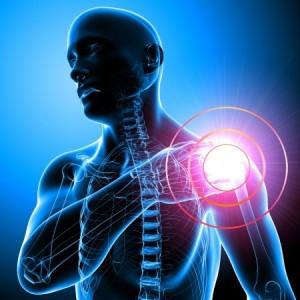

 Dr Howard Marans: Orthopedic Surgeons and Specialists in Fountain Valley
Dr Howard Marans: Orthopedic Surgeons and Specialists in Fountain Valley
in Fountain Valley
Beginning with a patient’s medical history and current symptoms creating distress to any part of the musculoskeletal system, including:
arthritis-pain-orange-county Bones
- Joints
- Tendons
- Muscles
- Ligaments
- Nerves

Fountain Valley Orthopedic Surgeon
A Fountain Valley orthopedic surgeon will work with each patient to find the best treatment possible. Achieving an accurate diagnosis in imperative to preparing and executing an effective and cost-efficient to treatment plan.
Finding the Best
- Each patient will have specific needs for wanting to find the best Fountain Valley orthopedic surgeon. At first, the task for finding an orthopedic surgeon may seem overwhelming. With referrals and reviews, the list of a potential Fountain Valley orthopedic surgeon will be minimized.
- Ask your primary care physician for a recommendation.
- Your primary care physician will have experience dealing with orthopedic surgeons within the area.
- Under some circumstances, the recommendation of your primary care physician is needed to proceed with specialized care.
- Consult your medical health care insurance provider’s claims representative for referrals and/or in network doctors.
- Depending on the policy agreement, the medical insurance provider may have specific criteria and surgeons within the health care network.
- Finding care outside of the network may increase out of pocket costs.
- Ask for referrals from trusted family members, friends, work colleagues and others within the social peer network.
- Use the Internet to research and review a leading Fountain Valley orthopedic surgeon and specialist within the area.
- Medical reviews are available on various sites including social media outlets.
- Consult professional databases including the American Academy of Orthopedic Surgeons and American Medical Association.
- The databases are accessible online with various features to aid in researching the available specialists within a specific geographical area.
Make the Appointment
When you search is over, make the appointment to see a Fountain Valley orthopedic surgeon – like Dr. Howard Marans. Before going to the appointment take the time to write out various questions to ask the doctor. Individualized attention and care are the main factors in finding a highly qualified orthopedic surgeon. The questions may include:
- What are the doctor’s credentials? Board certifications?
- How many similar procedures are performed on a regular basis?
- What are the primary risks to proceeding with this type of treatment?
- What is the desired outcome for this specific treatment program?
- Does the procedure result in a specific amount of improvement?
- What are the non-surgical treatments available? How would this approach help?
- Does the procedure require a hospital stay?
- How much physical therapy will be needed after the surgery?
An orthopedic surgeon should take the time to answer each question to make the patient feel comfortable with the choice. Individualized care is important for achieving a successful outcome. If, at any time, the patient does not feel comfortable with the choice, a second opinion should be the next step in the care process.
Leading Orthopedic Surgeon in Fountain Valley
In the Fountain Valley area, Dr. Howard Marans is specialized in the treatment and care of the musculoskeletal system. For over 33 years, Dr. Marans has successfully treated the orthopedic needs of his patients in a timely and cost-efficient manner
In some cases, Dr. Marans will see the patient the same day as the accident. Accepting most insurances – including PPOs – Dr. Marans will execute a precise treatment plan to achieve an optimal outcome without creating a financial burden on his patient. Please click below to schedule your consultation or call us at 714.979.8981.

 Howard Marans MD: Huntington Beach ACL Surgeon For Athletes
Howard Marans MD: Huntington Beach ACL Surgeon For Athletes
Providing stability and support, the anterior cruciate ligament (ACL) is a working component of the knee. Individuals who participate in sports or other athletic routines are more likely to acquire an ACL injury. Impacting negatively on exercise or training routines, a torn ACL may create a significant amount of pain and limit range of motion.

 Dr Howard Marans: Orange County’s Top Orthopedic Ankle Surgeon
Dr Howard Marans: Orange County’s Top Orthopedic Ankle Surgeon
A sports injury – or a degenerative disease – of the ankle may greatly effect a person’s daily mobility. The ankle and foot are designed to sustain and absorb enormous amounts of pressure throughout an individual’s lifetime. Injuries – or simply wear and tear – to the ankle are relatively common.
Orthopedic Ankle Surgeon foot Issues involving the ankle may create difficulty for a person to finish the simplest of routine activities. In Orange County, finding the top orthopedic ankle surgeon – like Dr. Howard Marans – will be able to help a person return to a normal, active lifestyle.
When to See an Orthopedic Specialist
Each person has specific reasons for wanting to reach out to an orthopedic specialist. In general, everyone expects different aches and pains at times throughout their lifetime. Critical problems arise when the ailments do not subside over a specific period of time.
In the ankle, chronic pain may be a sign of a larger problem. Obtaining an accurate diagnosis causing one’s ankle pain will allow an orthopedist design an effective treatment plan. Various other symptoms may contribute to the problem, such as:
Any one – or a combination of – these symptoms may require a less invasive treatment program including Physical Therapy or over-the-counter medication. Or, the orthopedic ankle surgeon will determine what type of surgery is best to achieve an optimal outcome.
Finding the Top Orthopedic Specialist
One of the requisite qualities of an orthopedic ankle surgeon is to design individualized treatment for rehabilitation in a timely manner. The orthopedic specialist should have training and credentials in a variety of common ankle ailments.
As a potential patient, feel free to ask about the number of times a similar procedure is performed on a weekly or monthly basis. A consistent orthopedic surgeon will be current on a variety of treatment approaches.
Ask for referrals from primary care physician, friends, family members, or co-workers for the toporthopedic ankle surgeon in Orange County.
Orthopedic Ankle Surgeon in Orange County
In Orange County, Dr. Howard Marans has maintained a consistent, busy, successful practice for over 33 years. Dr. Marans will work with each patient on an individual basis, providing the best ankle treatment plan. Using both non-surgical and arthoscopic surgery procedures, Dr. Marans will suggest the best treatment option for obtaining the optimum outcome.
Accepting various forms of insurance, including PPOs, Dr. Marans strives to give the highest level of care without creating an overwhelming financial burden for the patient. Please click below to schedule your consultation or call us at 714.979.8981.

 Dr Howard Marans: Is Knee Arthritis Treatment Covered By Insurance?
Dr Howard Marans: Is Knee Arthritis Treatment Covered By Insurance?
The symptoms of arthritis can negatively effect daily living routines. Arthritis creates pain, swelling, and stiffness in the joints. When a person has arthritis in one or both knees, everyday activities become extremely difficult.
Knee Arthritis Treatment
Even though arthritis is incurable, finding options to manage the painful symptoms will aid in staying active. Various factors including the degree of degeneration will help determine the best type of knee arthritis treatment for each individual.
Medical Insurance
The costs of knee arthritis treatment will vary with each person’s particular insurance policy coverage. Calling the medical insurance provider’s customer service representative will help determine the amount of coverage a patient has for knee arthritis treatment. Each health insurance policy is different. Specific guidelines for knee arthritis treatment may need to be followed for the utmost medical insurance coverage compensation.
- Prior recommendation and referral from the family or primary physician
- The orthopedic specialists must be within the medical insurance care network
- Co-pays or deductibles may be part of the out of pocket costs as outlined in the insurance policy
- Non-surgical measures may first need to be implemented prior to surgery costs coverage
Non-Surgical Options
Under many insurance policies, surgical options are often viewed as the last resort in knee arthritis treatment. An accurate diagnosis is the first step in determining the type of individualized knee arthritis treatment.
Unless the degree of degeneration is too severe, a patient will typically begin treatment with non-surgical options to relieve the symptoms.
- Over the counter or prescription drugs to reduce inflammation and pain
- Corticosteroid or hyaluronic acid injections
- Weight management to help reduce the pressure and stress on the knee joints
- Physical therapy to strengthen the muscles around the knee to help improve movement and flexibility
- Walking aids or a cane to help support stability during movement
- Knee brace to provide extra support
Surgical Options
If the non-surgical options do not yield the desired results, the next step in the knee arthritis treatment process is surgery. Knee joint replacement is one of the most effective methods used. The joint is removed and replaced with a prosthesis. The costs vary with medical insurance guidelines and other contributing factors.
- Geographic location
- Length of hospital stay
- Type of prosthesis used
- Surgical approach
- Pre-existing medical conditions that may require specialized care
- Amount of time in the operating room
- Anesthesia costs
- Unanticipated medical care
Each component of treatment will add to one’s final medical expense. Without medical insurance or limited coverage, a knee joint replacement procedure could cost a patient over $50,000. Knowing the knee arthritis treatment options and following guidelines will help keep the costs manageable.
Located in Orange County, Dr. Howard Marans strives to return a patient back to a pain-free lifestyle. Dr. Marans will create an individualized knee treatment approach. Each step in the medical treatment program will be explained in great detail to allow the patient time to ask questions. Following each step of the patient’s progress, Dr. Marans will implement a precise execution for knee arthritis treatment approach.
Knee Arthritis Treatment Provider
With a consistently busy practice for over 33 years, Dr. Howard Marans provides the best knee arthritis treatment options available kneeto return his patients back to their active lifestyle. Dr. Marans accepts various types of medical insurance, including PPOs. It is the Doctor’s goal to provide the highest level of care without an overwhelming financial burden for the patient. Please click below to schedule your consultation or call us at 714.979.8981.

 Dr Howard Marans: Best Orthopedic Doctor For Athletes and Sports Injuries
Dr Howard Marans: Best Orthopedic Doctor For Athletes and Sports Injuries
Maintaining an active lifestyle as a student-athlete, minor league player, professional player, or just training to stay fit is a priority to millions of people. When an injury causes a person to halt the training or participation in the sport, the desire to return becomes a feeling of urgency. Athletic and sports injuries may occur due to a variety of circumstances including the type of training or sport of choice.
Orthopedic Doctor for Athletes
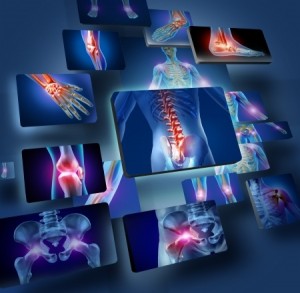
A specialized orthopedic doctor for athletes will work closely with the injured person in an individualized manner to achieve an optimal outcome.
Sports Medicine
Sports medicine works on different levels by helping a person:
- Achieve peak performance
- Recover from all types of injuries
- Prevent future injuries through training and education.
Seeking an orthopedic doctor for athletes is essential. The orthopedic specialist understands a person’s dedication for a chosen sport or fitness activity. With the extra training and credentials, the orthopedic doctor for athletes will design the best treatment program for an injured person to allow for the fastest recovery.
Seeking Out Help
Finding the best orthopedic doctor for athletes and sports injuries will depend on a variety of contributing factors. Start by making a list of the orthopedic specialists within a specific geographic location. Ask friends, coworkers, family members, and others to make a referral. Or, use the Internet to check out online reviews. Find out the orthopedic doctor for athletes area of expertise.
Fractures, severe sprains, and overextension are common injuries for athletes. Other injuries require specialities of orthopedic practice.
- Shoulder: arthroscopy, rotator cuff, impingement
- Knee: ACL, MCL, PCL injuries and torn cartilage
- Hip: cartilage injury, tears, bursitis, tendon tears
- Elbow: MCL injuries, impingement,
- Ankle and foot: tendon repairs
Accurate Diagnosis
Treating the various orthopedic problems and injuries for athletes begin with an accurate diagnosis. The best orthopedic doctor for athletes will begin with a complete medical history. Before the initial consultation, a patient may want to write down information to help with the process. The smallest detail of past injuries may help identify an overtraining technique or other source contributing the present problem.
Along with the complete medical history, a physical examination and testing will be done. The testing may be done with x-rays, MRIs, or other imaging techniques. After all the medical information is gathered, the orthopedic specialist will design a treatment program to best fit the athlete’s needs to return to an active lifestyle.
Treatment Approaches
Each athlete will have a different treatment approach due to the individualized nature of the injury. When the injury is less severe, non-invasive methods are implemented.
- Rest
- Physical therapy to strengthen muscles and restore function
- Over the counter, prescription, and injections to help ease the pain and reduce inflammation to promote the healing process.
- Change in fitness routine to help in the prevention of future issues
- Bracing, or splints to support the injured area, during the healing process
When the non-invasive methods do not yield the desired results or the injury is too severe, an orthopedic doctor for athletes will recommend Arthoscopic Surgery to repair the damage.
Best Orthopedic Doctor for Sports Injuries
Understanding the unique needs of athletes, Dr. Howard Marans will work with each patient to find the best treatment approach involving the shortest amount of recovery time possible. Please click below to schedule your consultation or call us at 714.979.8981.
Customer support service by UserEcho
